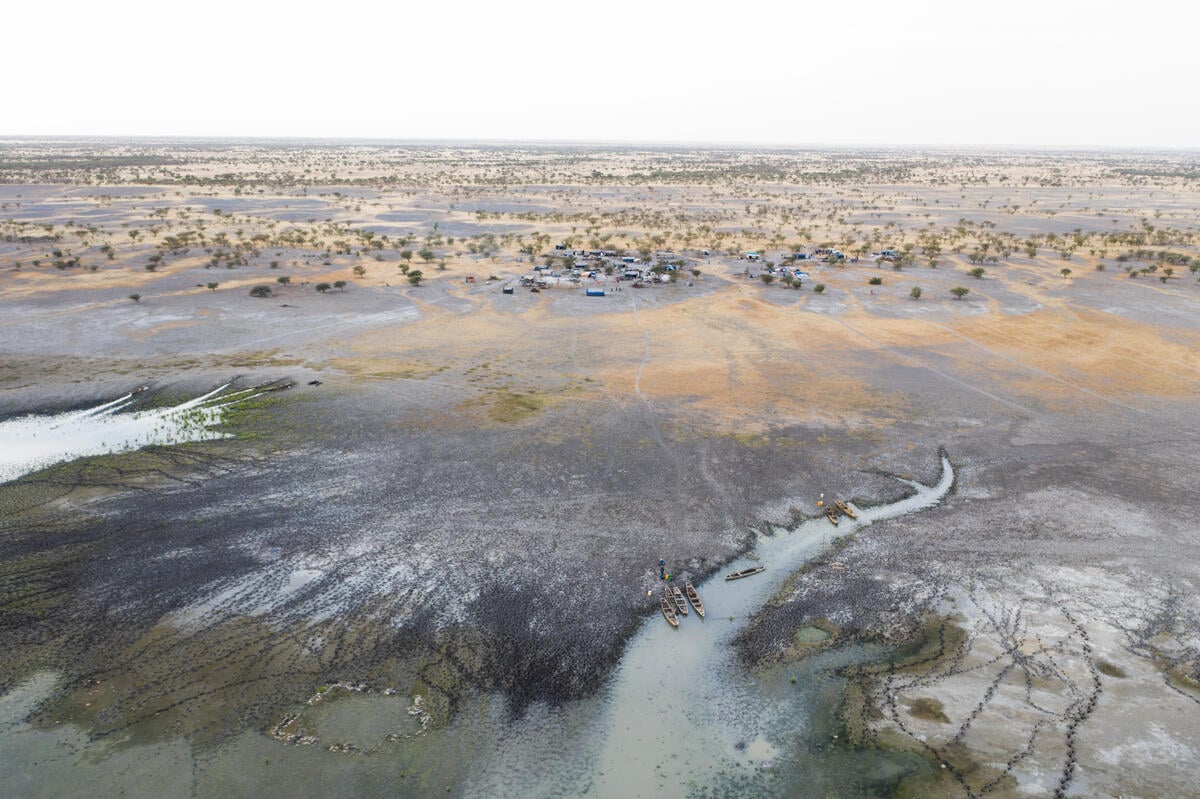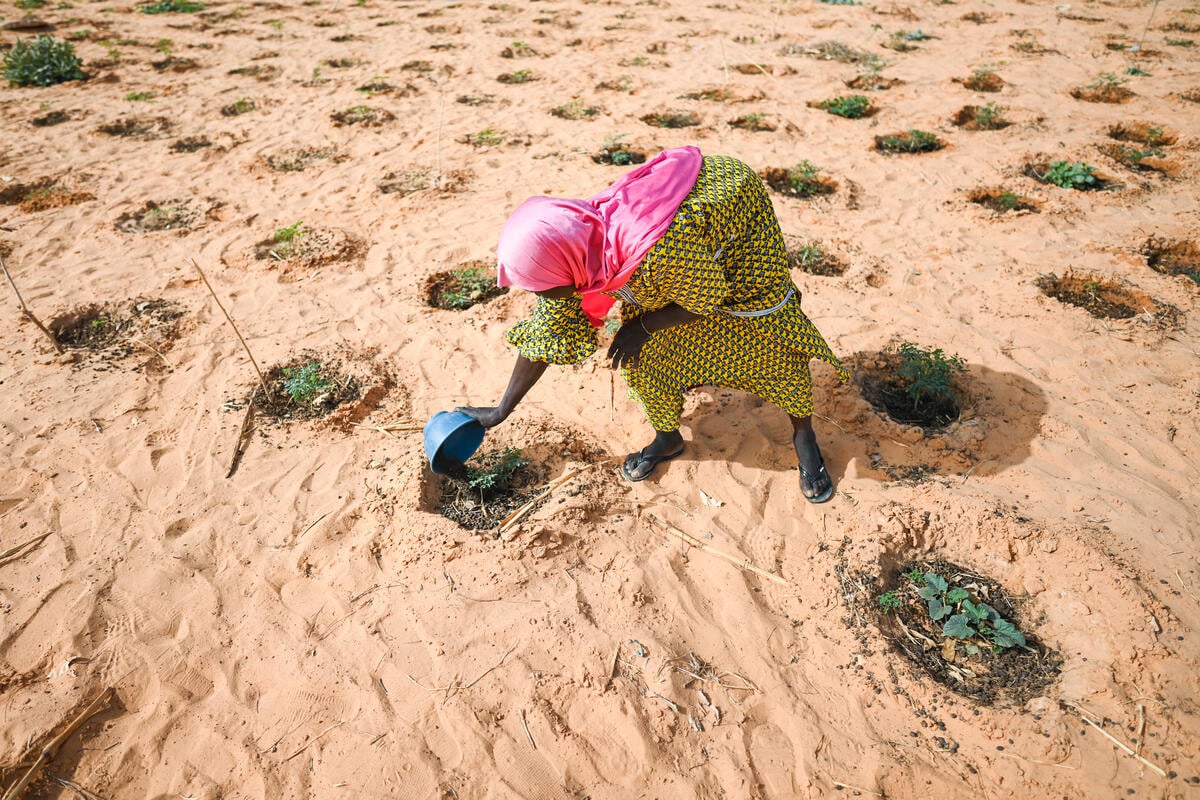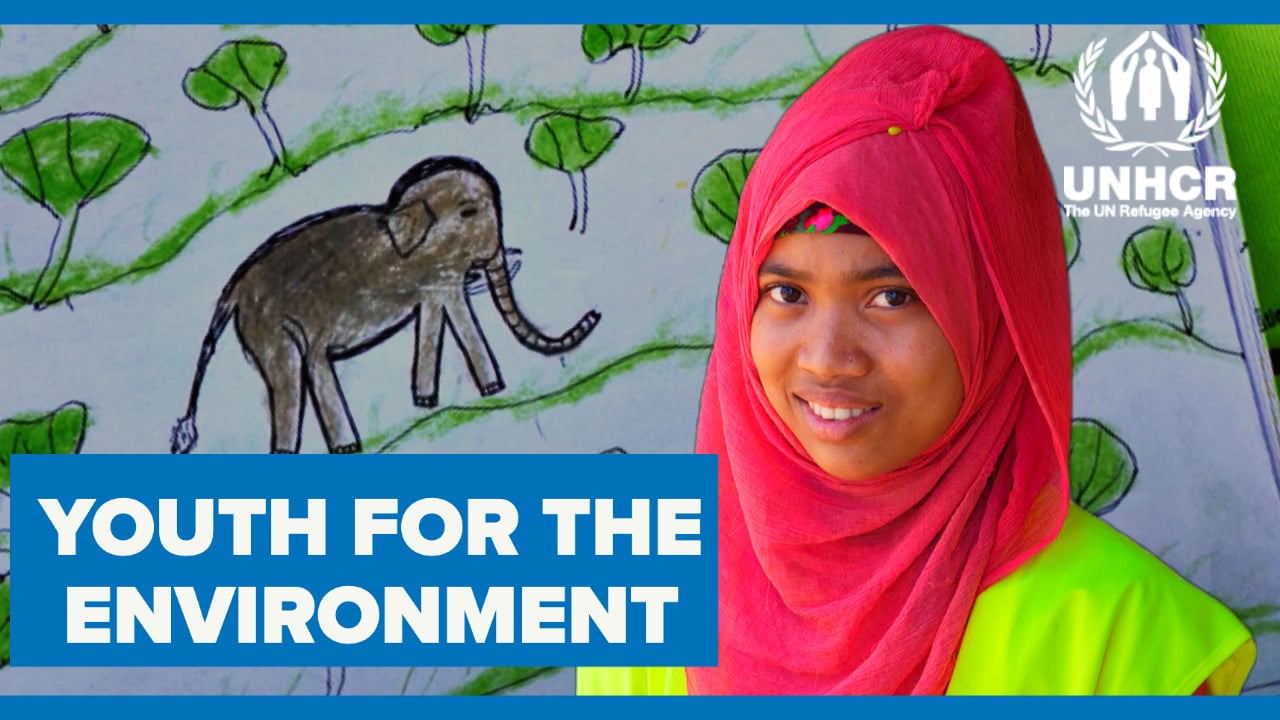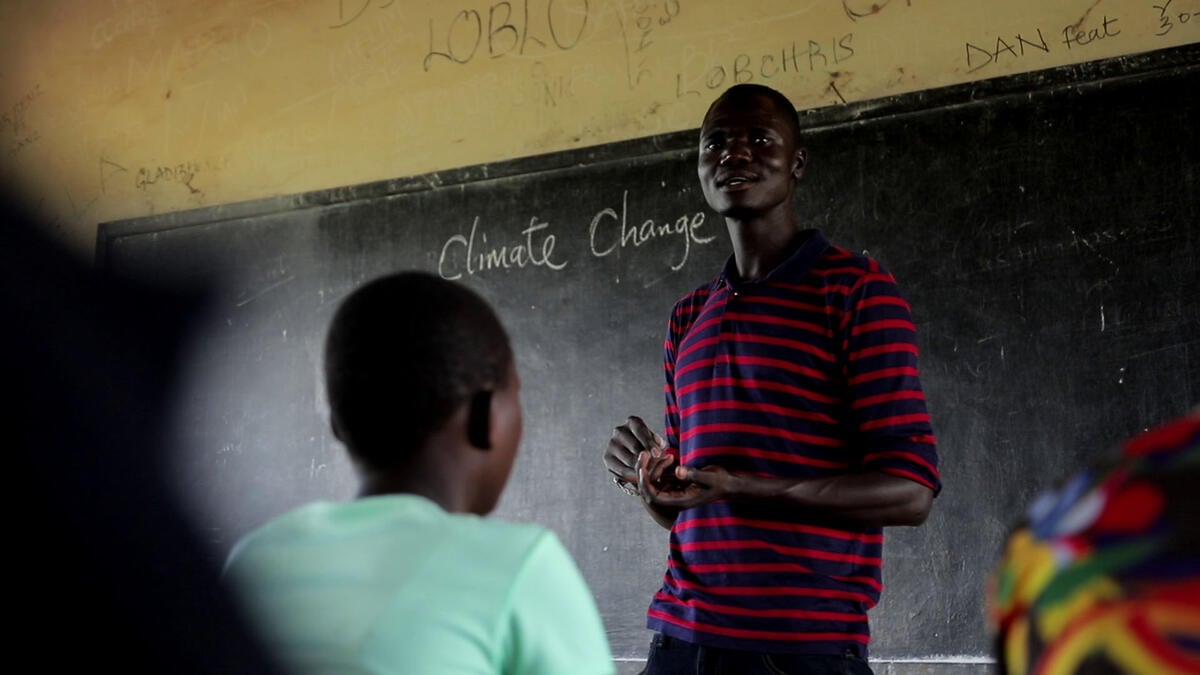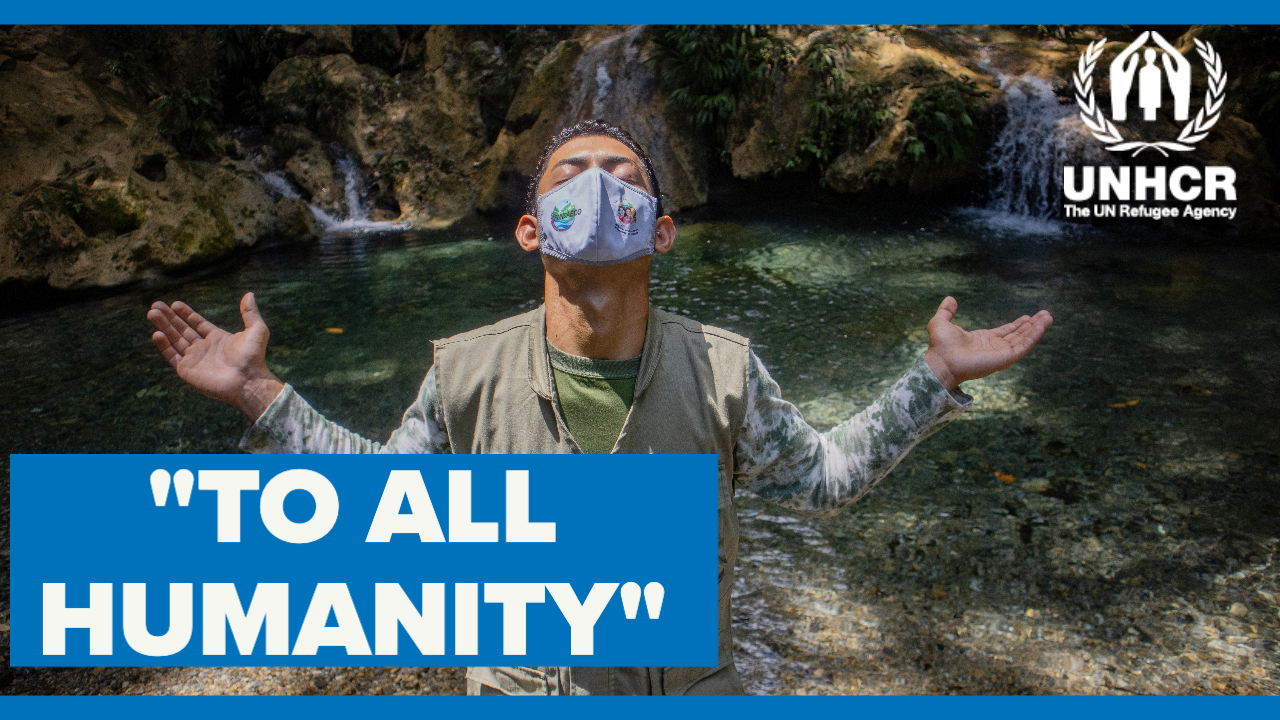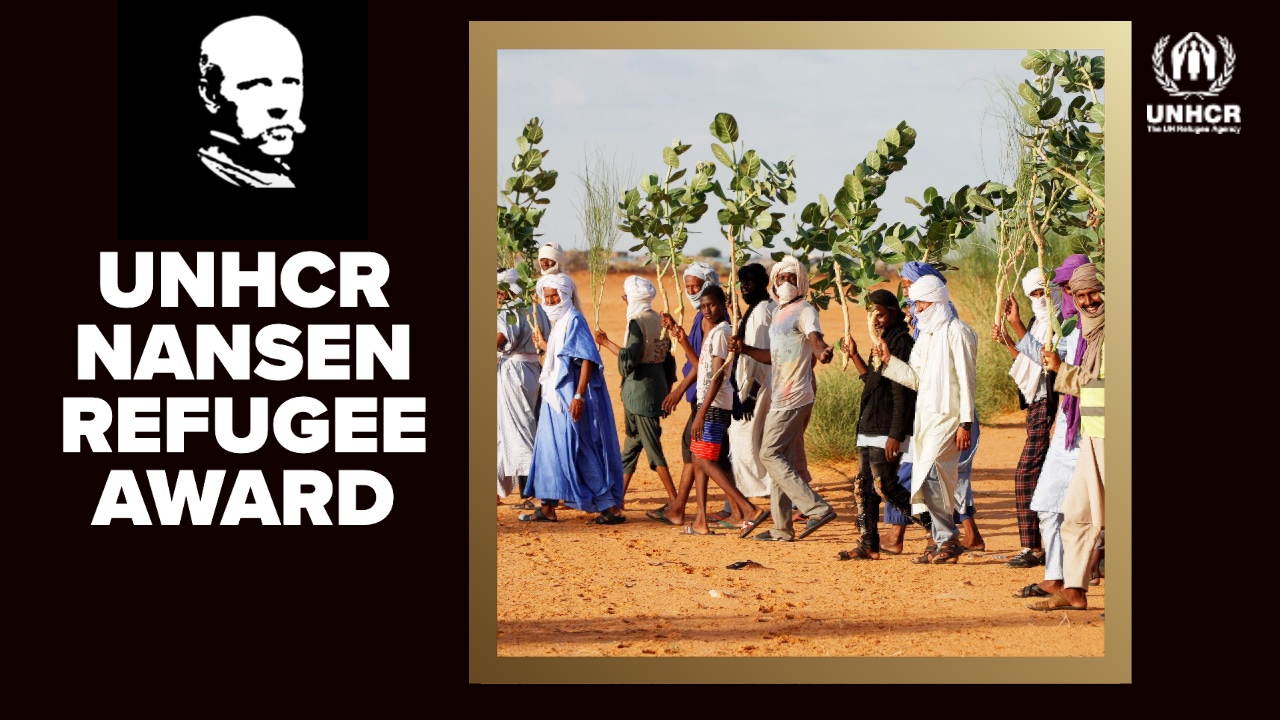Solar lamps brighten future for refugee students in Uganda
Solar lamps brighten future for refugee students in Uganda

KYAKA II REFUGEE SETTLEMENT, Uganda, February 23 (UNHCR) - Moses Kilumba knows all about being an underdog. As a boy, he lost his father during the tribal and political unrest in the Democratic Republic of the Congo. Together with his mother and five siblings, he fled east into Uganda when he was 10 years old, dropping out of school for two years as his family could not afford it.
Today, he has overcome these odds to emerge as the top student not just in the Kyaka II refugee settlement but also in the whole district of Kyegegwa, located west of the Ugandan capital, Kampala. He found this out when the results of the country-wide primary school leaving examinations were announced in late January.
"Growing up without a father and seeing other people suffer made me study hard," said Moses, now 15. "I want to help disadvantaged people and make the community better in the future."
He is proof that strong personal motivations and targeted assistance have helped young refugees to excel in refugee schools. According to the recently announced primary school results, pass rates among students in four refugee settlements in south-western Uganda have increased significantly over the last three years. In the Kyaka II and Kyangwali settlements, the pass rates for refugees were higher than for their local counterparts. In the Nakivale and Oruchinga settlements, they were equal. These encouraging improvements were the result of specific interventions.
Starting in 2010, the United States-funded President's Emergency Plan for AIDS Relief (PEPFAR) has been helping refugee children in Uganda who are either orphaned or are vulnerable to HIV/AIDS. They receive livelihood as well scholastic support in the form of uniforms, schoolbags, books, stationery and other materials, and full secondary school scholarships.
In the last two years, UNHCR has also provided promising refugee students with rechargeable solar lamps to extend their study time in places with little or no electricity. Moses, who used to study just half an hour in the evening, was then able to read from 3:00 am to 7:00 am to prepare for his exams.
Fellow Congolese Ombeni Nusura, 13, also used to squint over his books under the moonlight of Kyaka II. His mother could barely support her 10 children singlehandedly and could not afford to buy paraffin for lighting at night. That changed with the arrival of the solar lamp, and Ombeni went on to attain one of the highest scores in Kyegegwa district.
Their teachers also received additional support. In October 2010, their monthly salaries were increased from 200,000 to 300,000 Ugandan shillings (about US$ 85 to $ 128). This helped to motivate performance and minimise the hitherto high turnover rate. Fifteen rooms were built for staff accommodation, reducing teachers' commuting time and increasing their time with students. "Free Play" radios were distributed to best-performing subject teachers and parent-teacher committees. In Kyaka II's Sweswe primary school, the head teacher was voted best teacher and later helped his class of 26 students to pass their graduation exams.
Furthermore, parents had a crucial role to play too. They helped to pay for practice exams for their children, and provided packed lunches when needed. Together with refugee leaders, they were sensitized on their roles and responsibilities in promoting education and mobilizing others to get involved.
Ombeni summed it up aptly when he attributed his success to a combination of "hard work, determination, sacrifice, support from my mother, teachers, friends and UNHCR".
And he is not resting on his laurels. He wants to go on to secondary school and then study to become a doctor. His friend Moses dreams of becoming a
civil engineer. However, without a scholarship and other forms of school support, neither can continue their education.
The only secondary school in Kyaka II is Bujubuli Vocational Secondary School, a community-based school that offers a normal secondary school curriculum and vocational classes. The school runs on parents' contributions, which are often very irregular and late. Much as UNHCR was able to provide laboratory equipment, carpentry tools, catering equipment, tailoring equipment, beds and mattresses for the student hostels, the school struggles to recruit and retain qualified teachers on the little money available through contributions. There is no accommodation for teachers and thus little incentive to spend more time with the students or even to stay on the job.
"We would like to see the international community investing a lot more to sustain the progress of refugee students at the primary level, and to ensure that those who graduate can pursue higher education," said Kai Nielsen, UNHCR's Representative in Uganda. "This is the best way out of the vicious cycle of poverty and vulnerability."
There are nearly 160,000 refugees and asylum-seekers in Uganda, more than half of them from the Democratic Republic of the Congo, with smaller numbers from Somalia, Sudan, Rwanda and other countries in the region.
By James Onyango and Julius Okello in Kyaka II and Kampala, Uganda


